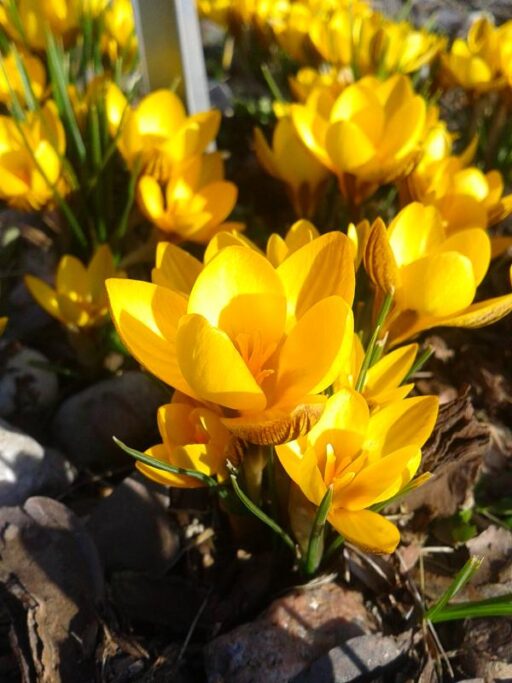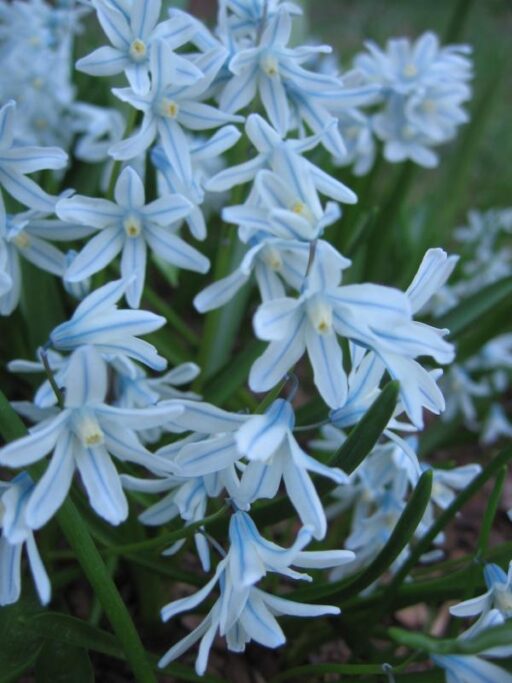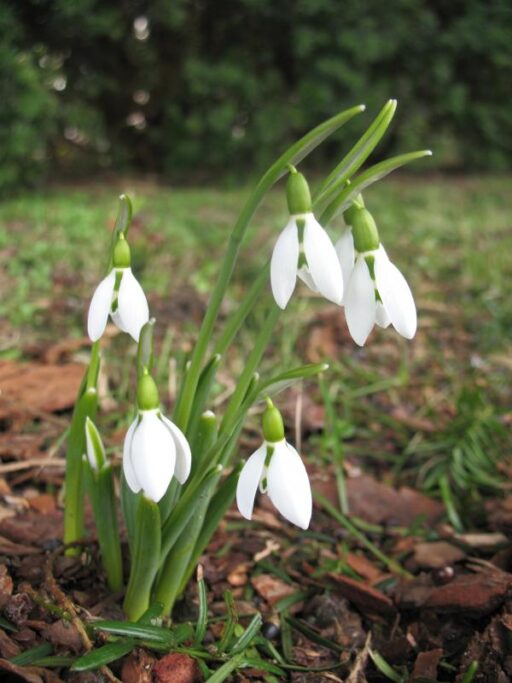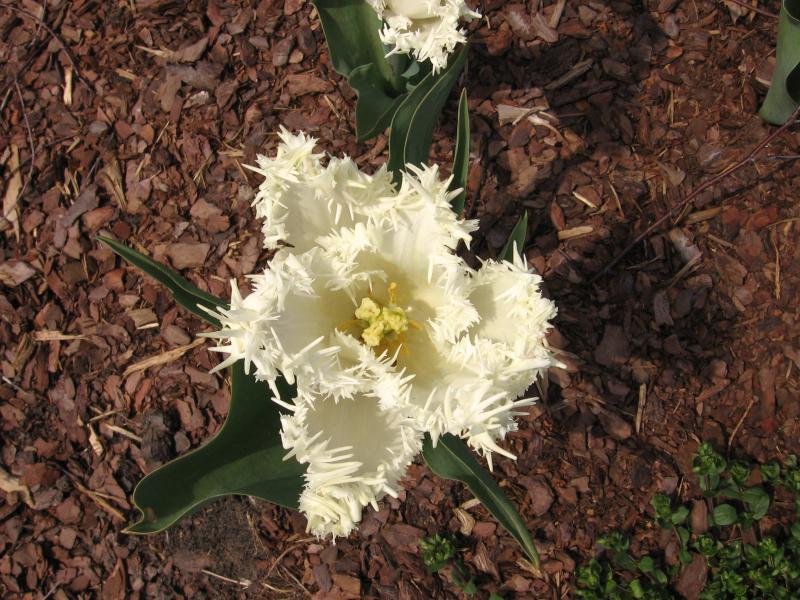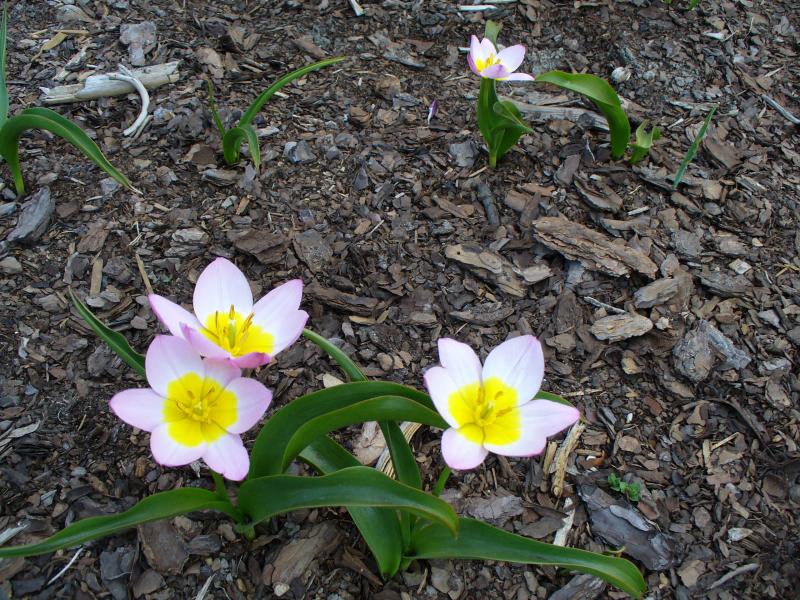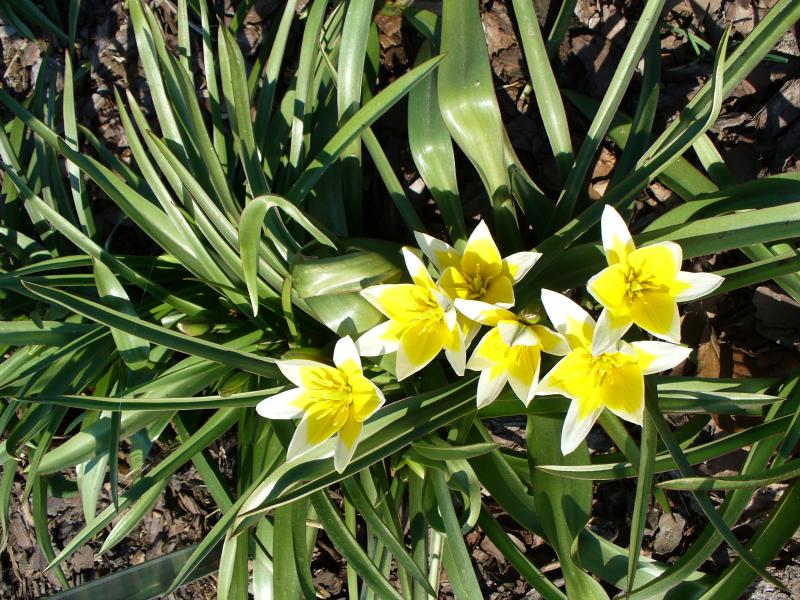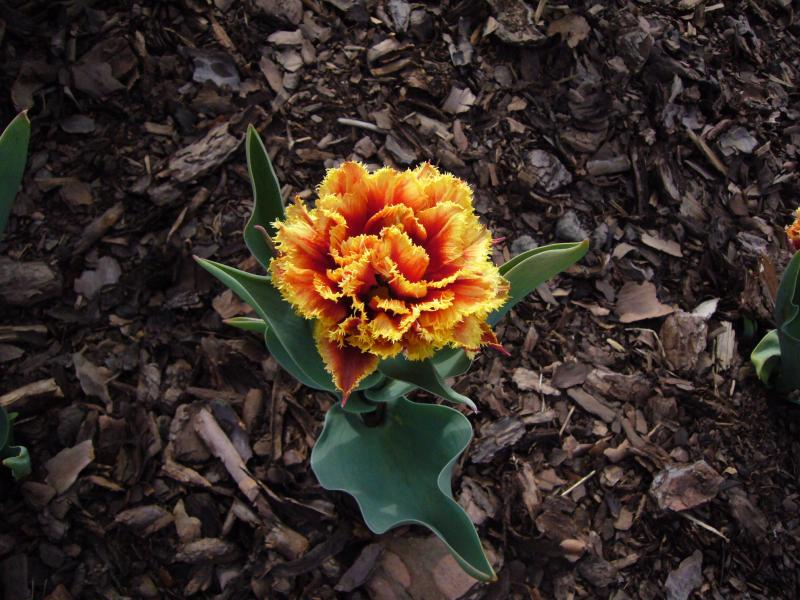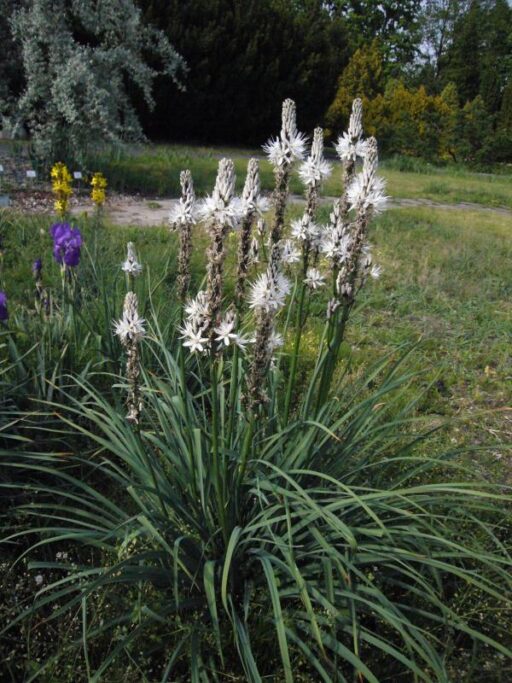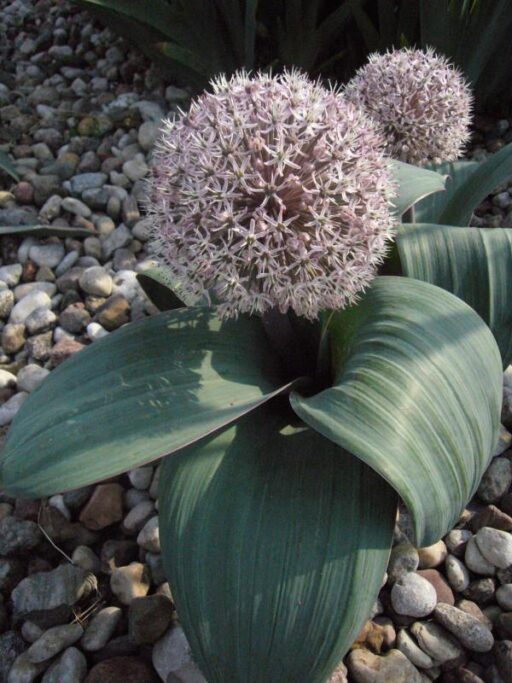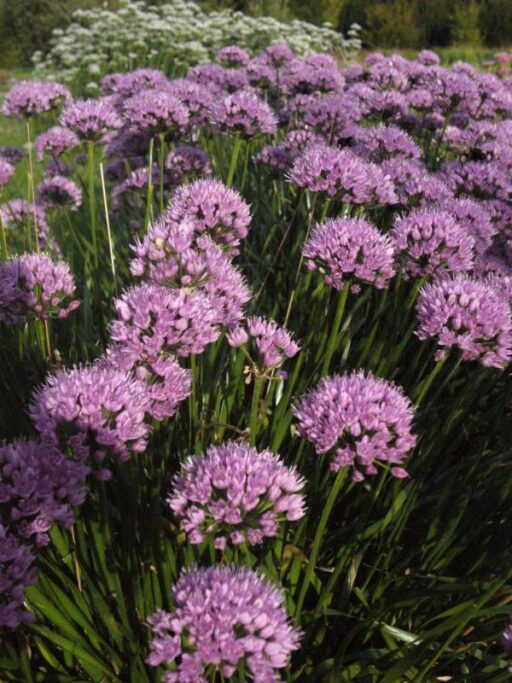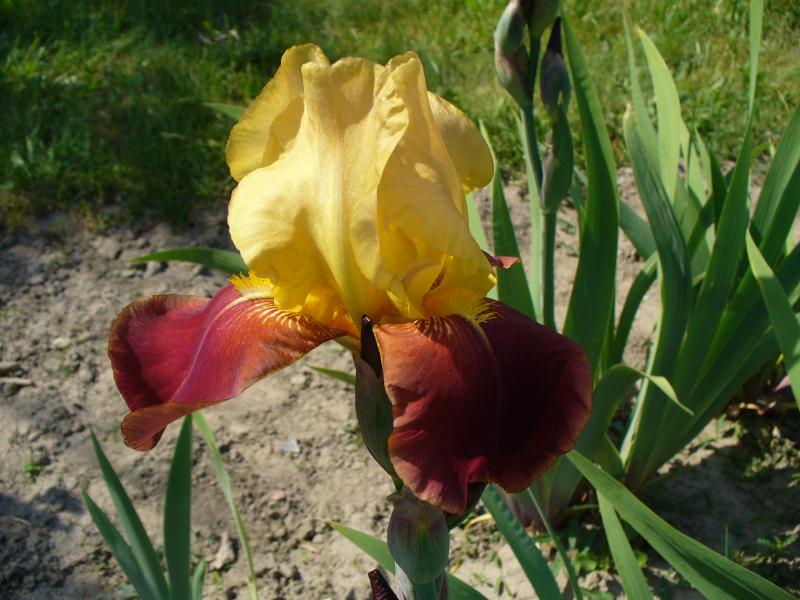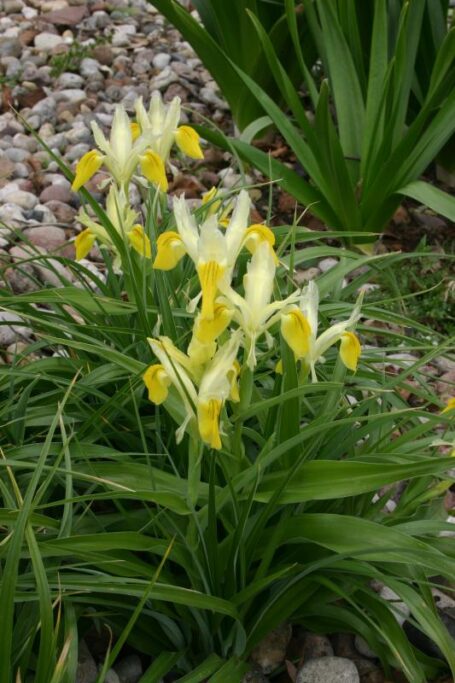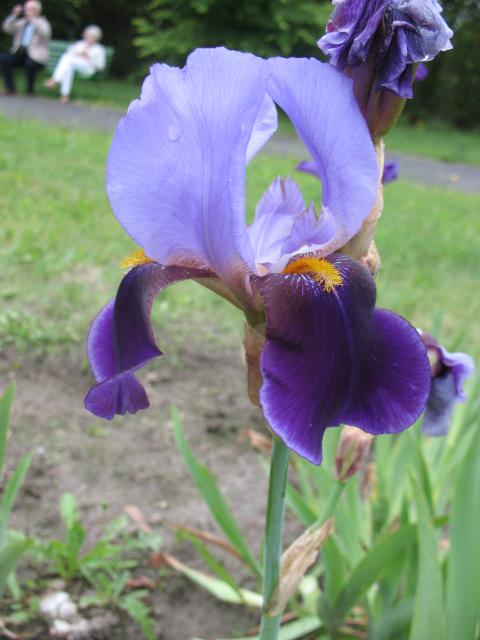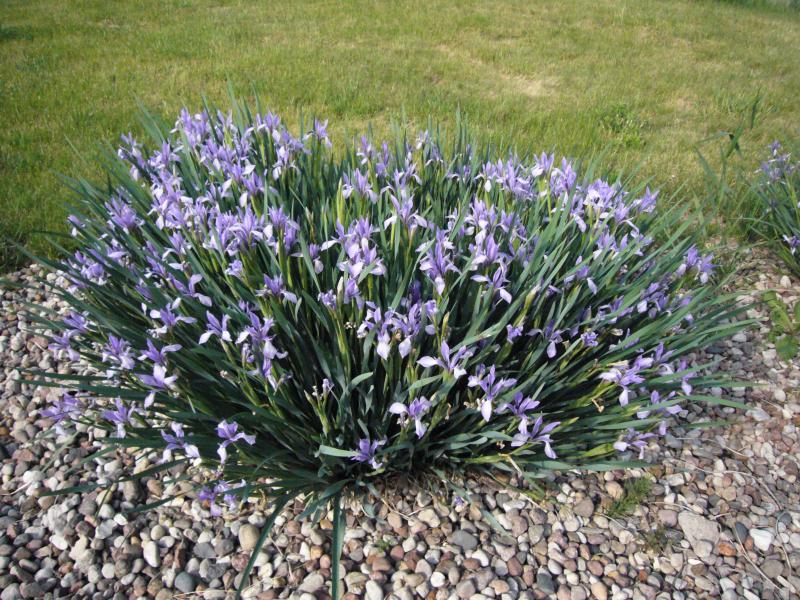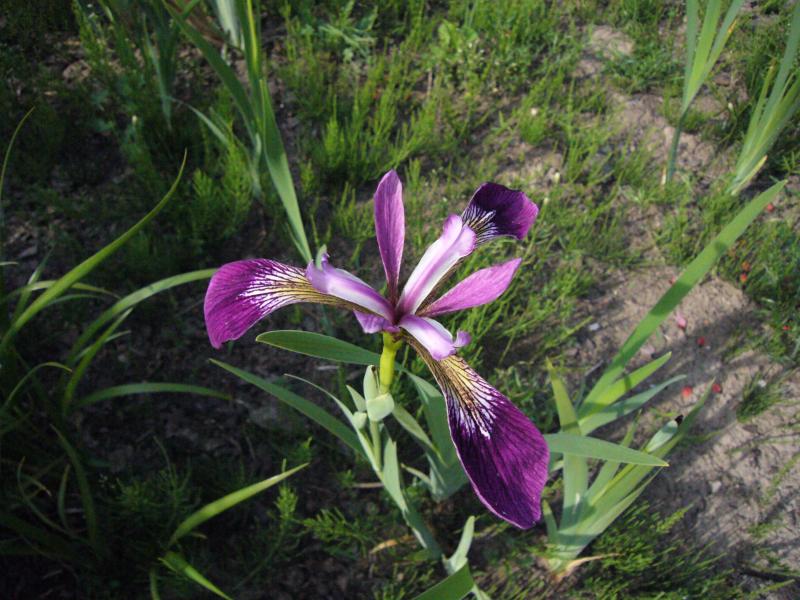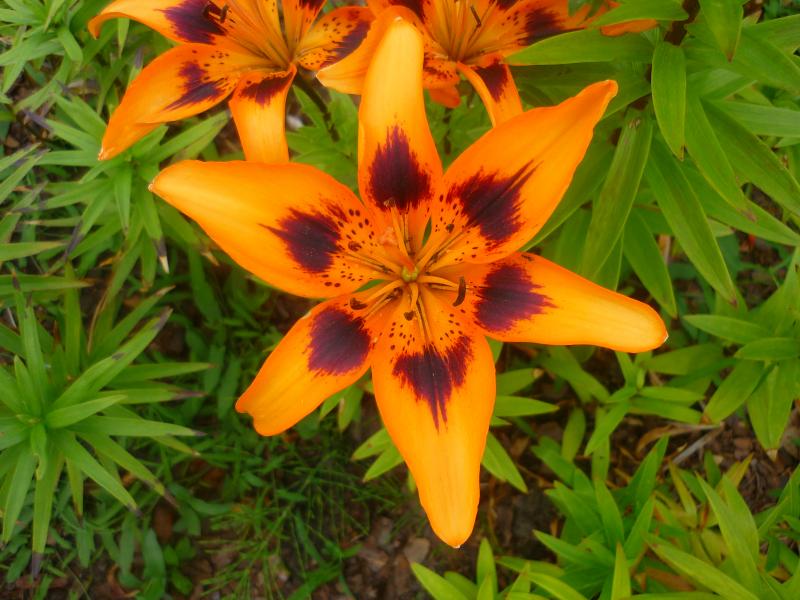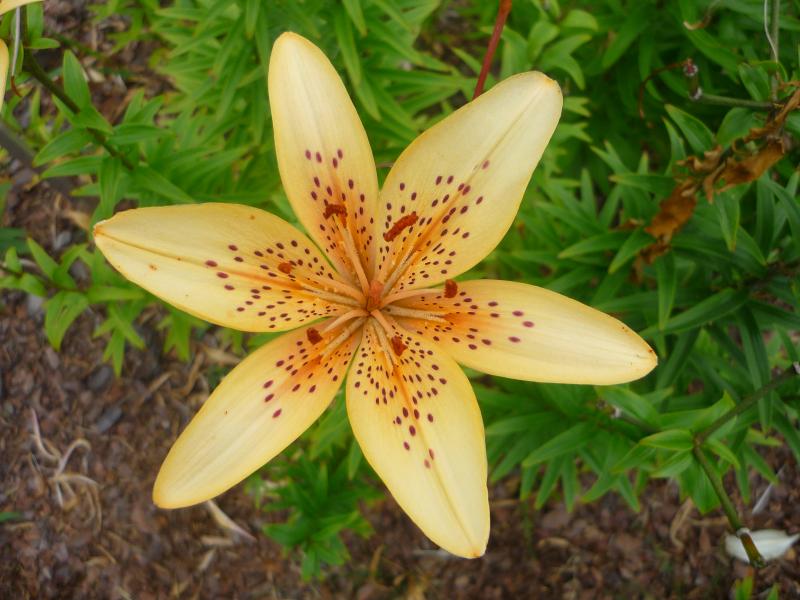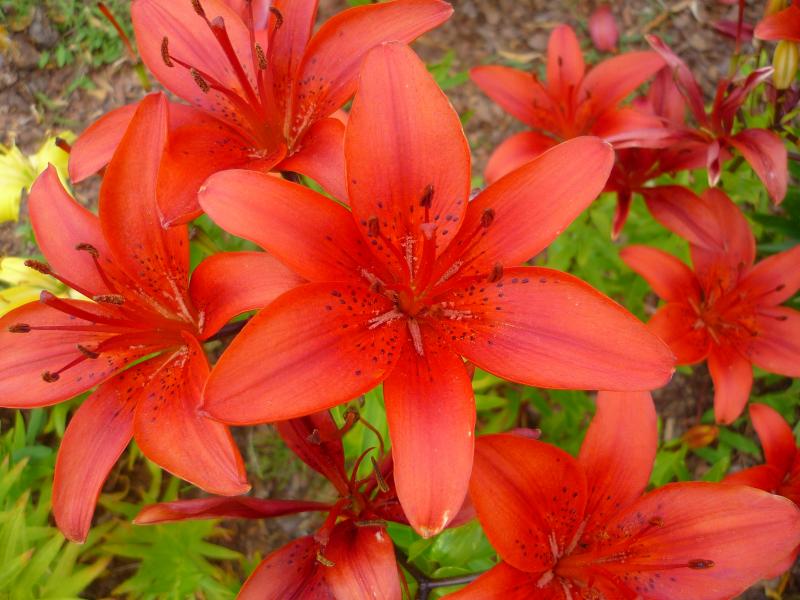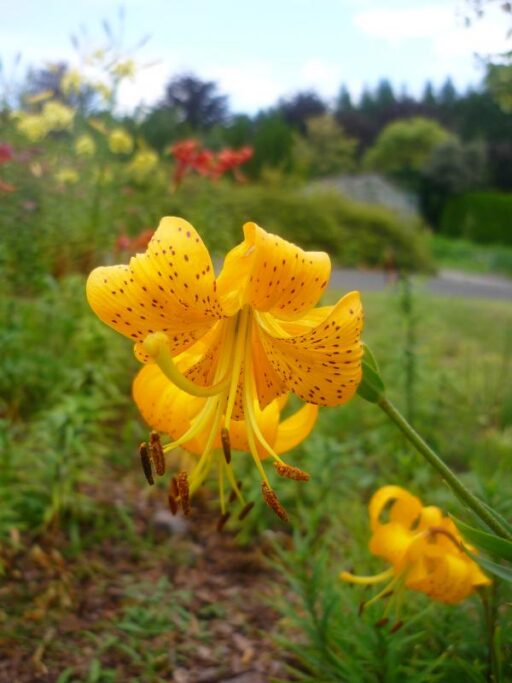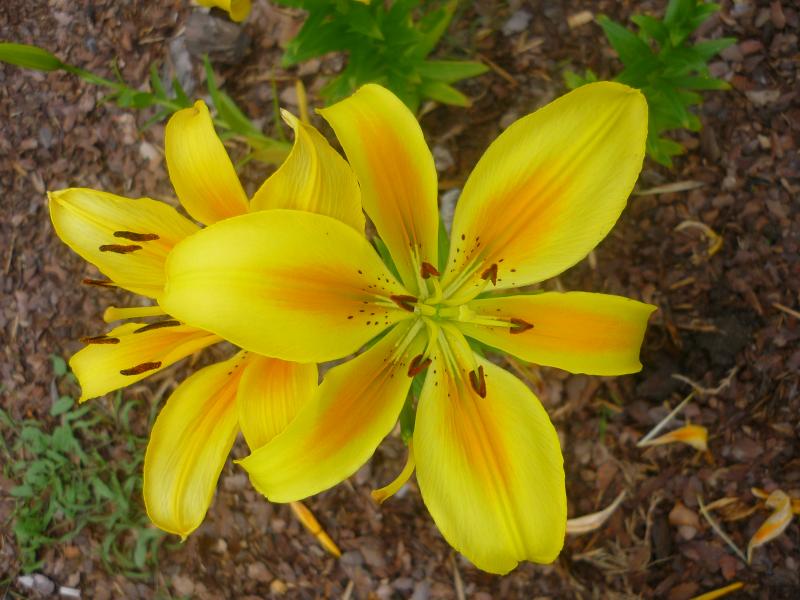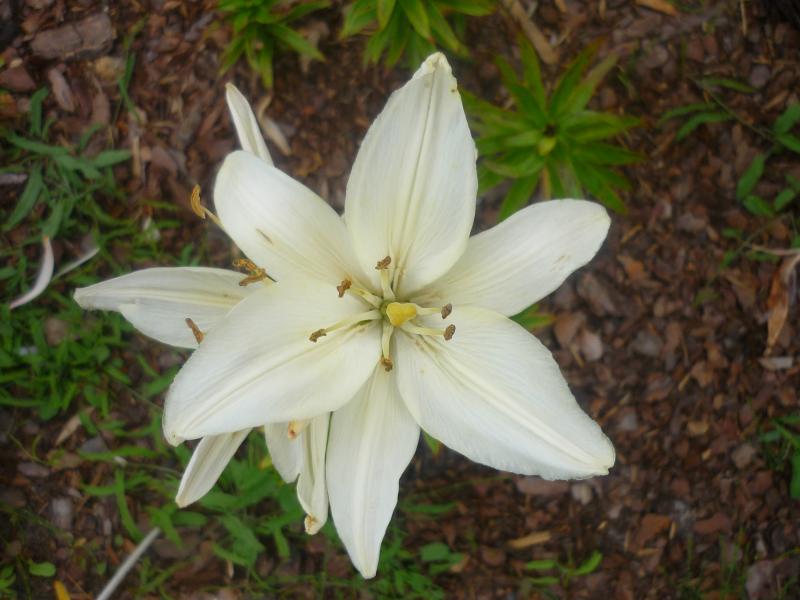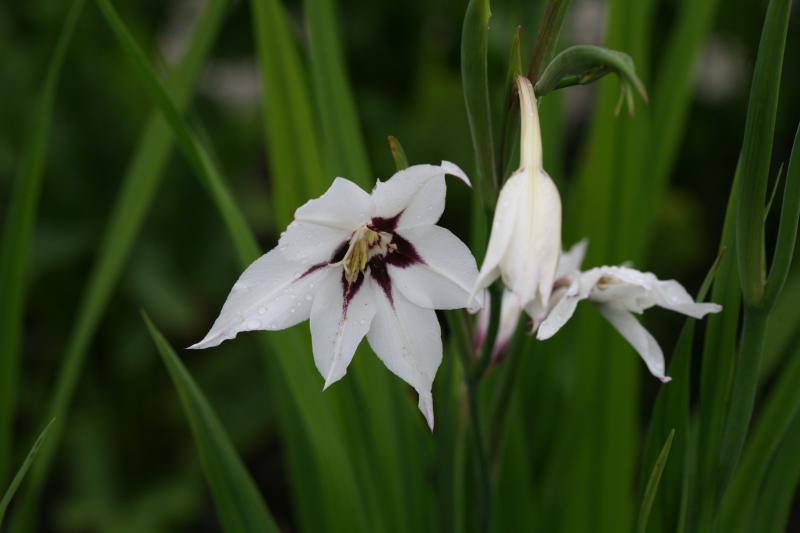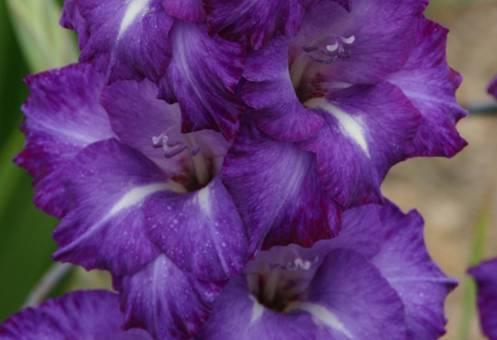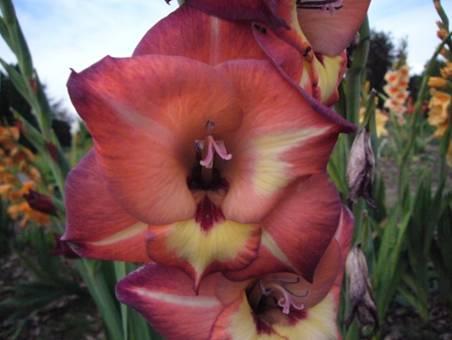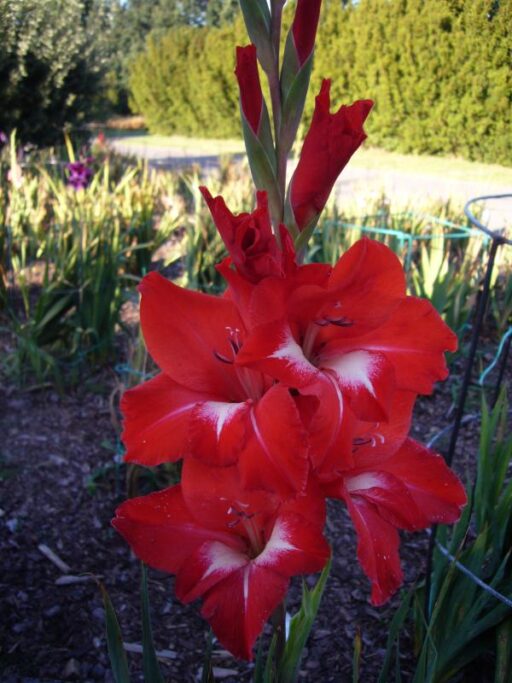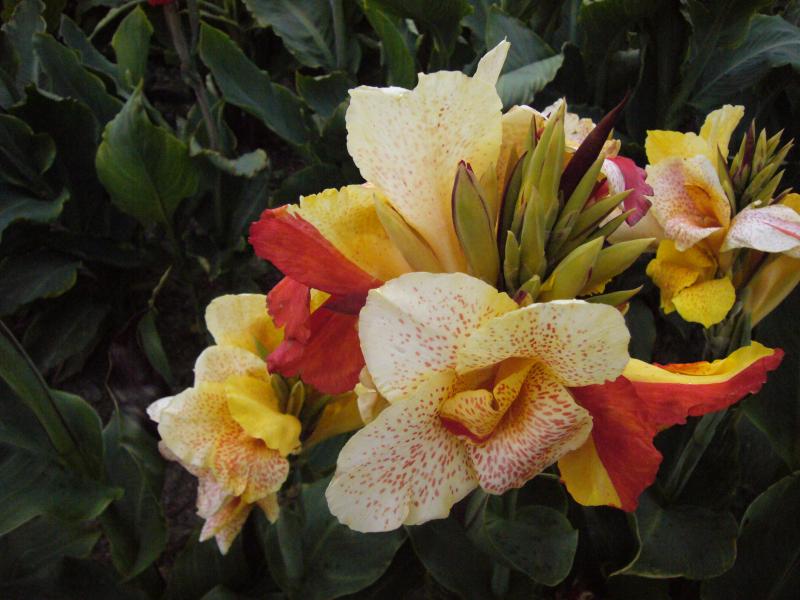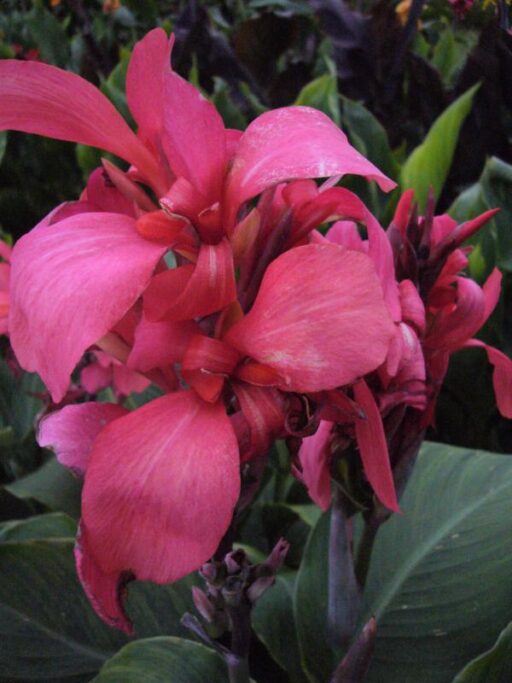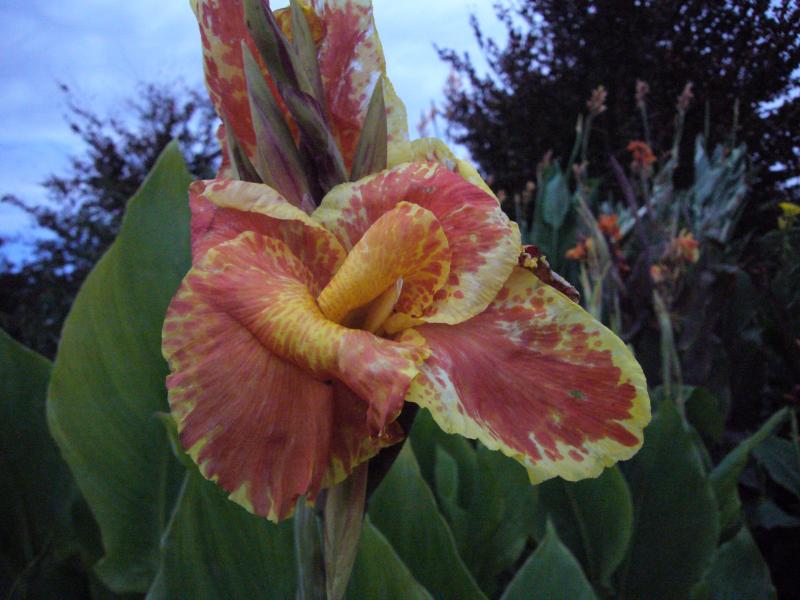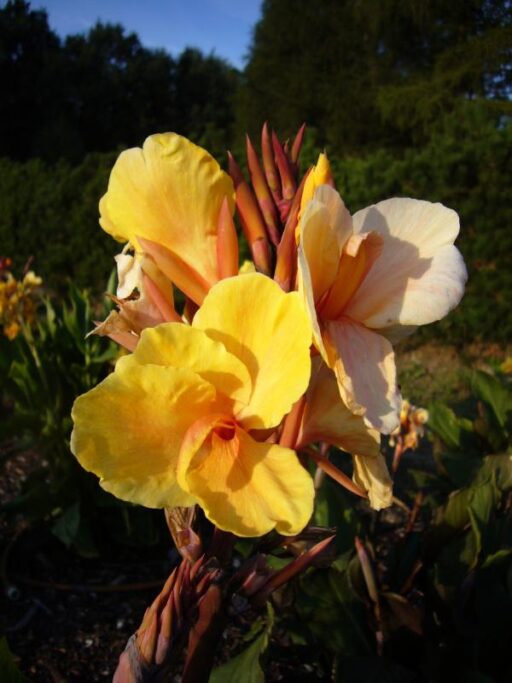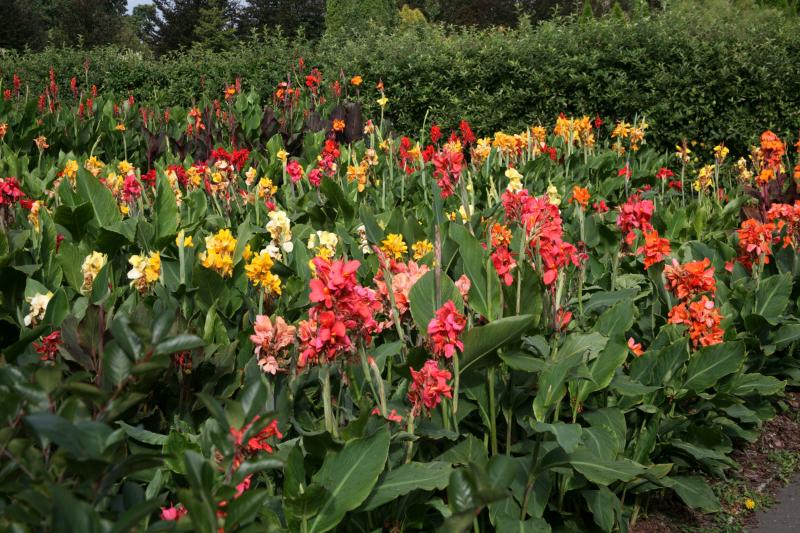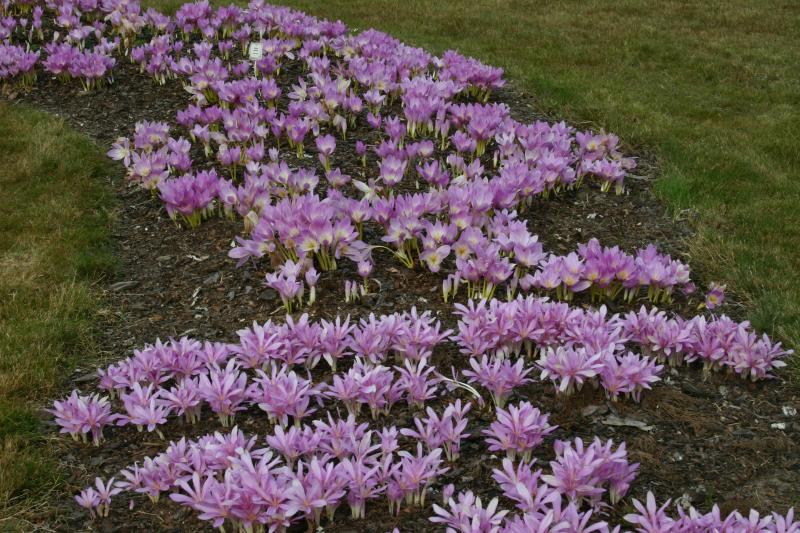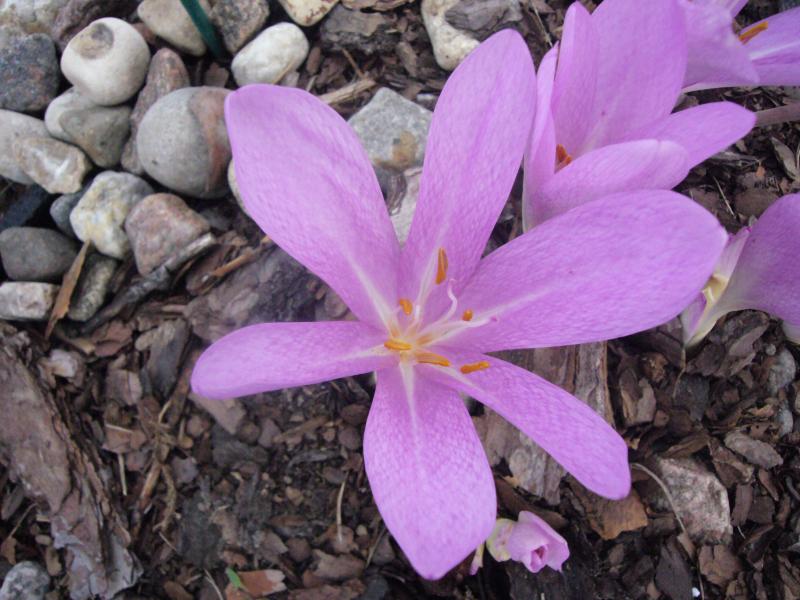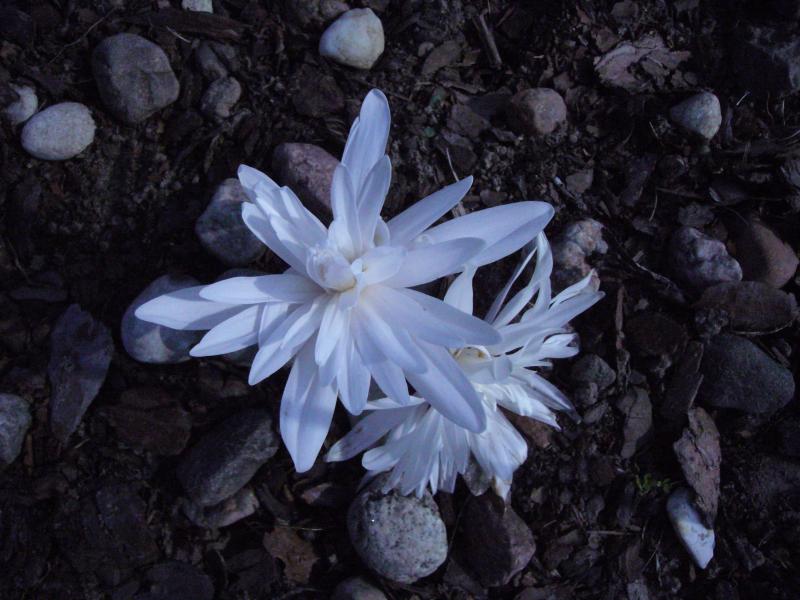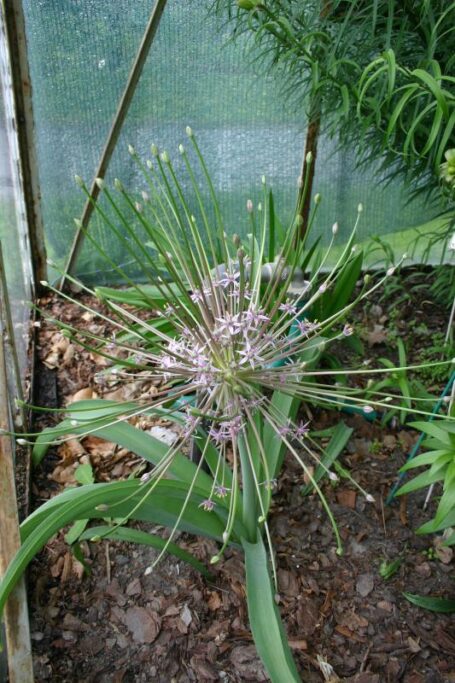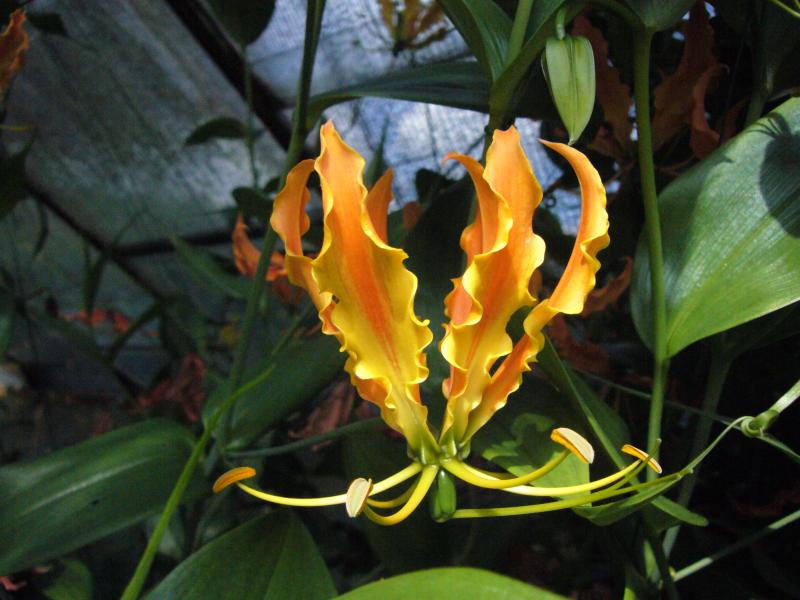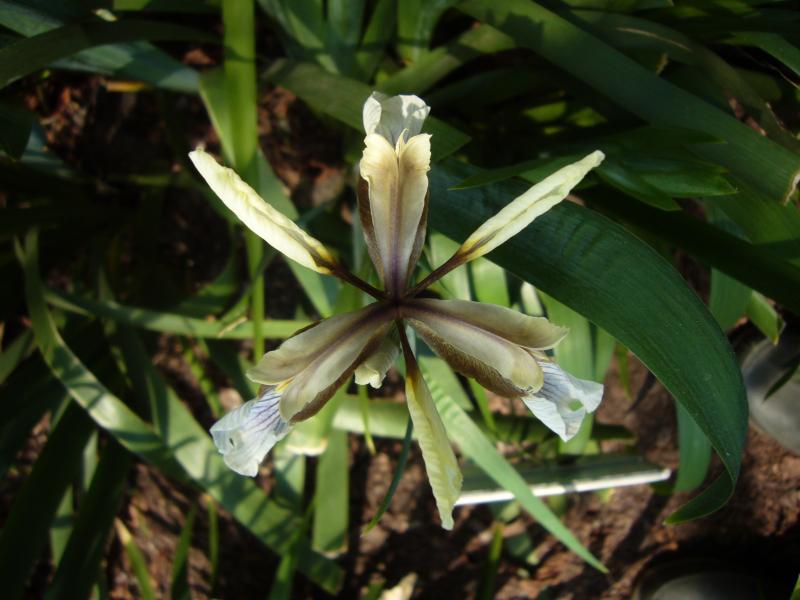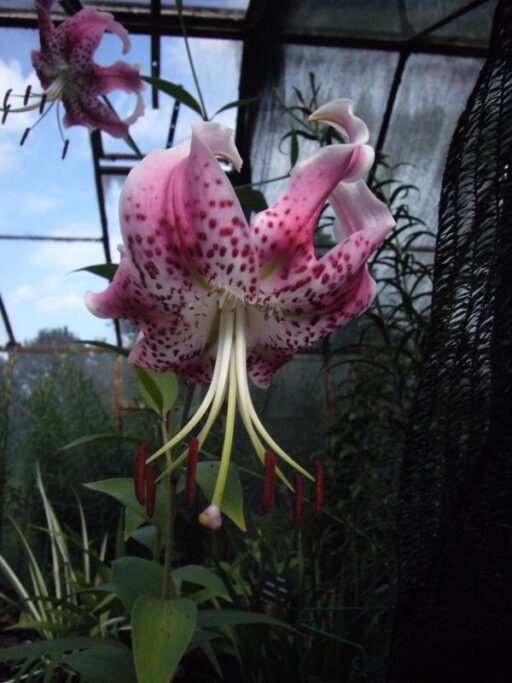- Supervisor: Kamila Rakowska-Szlązkiewicz, M.Sc.
- General data
Number of taxa: about 1,100.
Area: 0.3 ha
The collection of bulbous, rhizomatous and tuberous plants presents taxa belonging mainly to the garlic, (Alliaceae) lily (Liliaceae), iris (Iridaceae) and amaryllidaceae (Amaryllidaceae) families. These plants produce underground storage organs, which enables them to survive adverse conditions during winter in temperate climates or the dry season in tropical and subtropical regions.
In a shady bed, on the north side of a row of yew trees, various species of early spring flowering plants have been planted. There you can see onions, irises, sapphires, snowdrops, snowdrops, tinsel and many others. There are also spring-blooming crocuses, narcissi and checkerberries.
In 2004, tulips returned to the collection. To date, 250 of their taxa have been collected. They have been divided into 15 groups based on their origin, flowering season and flower appearance. Tulips were most popular in the 16th century, when for the price of one bulb you could buy a townhouse in Amsterdam. They are still the most widely grown ornamental plants in the world. An interesting phenomenon occurring in tulips is thermonasty. The flowers of these plants open at 15°C while they close at 13°C.
There are nearly 50 taxa of garlic in the collection. They are planted among chinchilla saplings, in a plot strewn with gravel. Some of the garlics grow vigorously in the spring, but their foliage dries out already at the time of flowering (in May/June), such as giant garlic (Allium giganteum), or garlic 'Globemaster', both with huge, purple, spherical inflorescences. Other species retain their foliage throughout the growing season, but usually have less showy inflorescences. Noteworthy are: an ornamental variety of chives (Allium schoenorassum 'Forescate'), and 'Spirale' - a variety of blue garlic (Allium senescens) with a decorative arrangement of leaves. In addition to garlics, among the scythers grow deserts, known colloquially as "Cleopatra's needle" (Eremurus), and asphodelus (Asphodelus). Unlike garlics, they have very long, narrow inflorescences.
The collection of species and varieties of scyphytes counts 234 taxons. Among them, especially valuable so-called botanical species belonging to 4 different types of environments are exhibited: aquatic, swamp, wet and dry. The most numerous on display are bearded irises, which, based on the season of flowering and growth, we can divide into 3 groups: low, intermediate and tall (often called American). To date, tens of thousands of varieties of chinchillas have been bred, which differ in: color and shape of flowers, height of inflorescence stems and flowering season. In addition to modern varieties, the collection also presents old varieties of safflowers, some even dating back to the 19th century, although they have smaller flowers, they are characterized by more exuberant flowering and greater resistance to fungal diseases.
The collection also includes approx. 100 species and varieties of lilies. The most numerous group are varieties belonging to Asian hybrids. They have flowers of different colors, from white to dark red, which we can enjoy in late July and early August. Less numerous are lilies from the group of Oriental hybrids. Their flowers are most often found in white and pink, moreover, they are fragrant.
Swordtails also bloom in summer. There are 180 varieties of them gathered. They are not resistant to frost, so their tubers are dug up in October and planted in late April the following year. The collection also includes one species, the Abyssinian gladiolus - Gladiolus murielae, which has small, strongly fragrant flowers. In the 16th and 17th centuries, gladiolas were considered medicinal plants to speed up the healing of wounds, and the tubers, when dried, were worn as talismans.
In late summer, streptocarpus blooms, of which 1 species and more than 50 varieties have been collected. They are more commonly known by their polonized Latin name, as cannas. Like gladiolas, they are not hardy, so their rhizomes must be dug up for the winter. The following year they are planted only in mid-May. The flowers of streptocarpus have warm colors: cream, yellow, pink or red. Streptococci also differ in the color of their leaves, which can be: green, dark green, purple-brown or striped.
Summer-blooming plants can also include lesser-known species such as coronilla, cantedeskia, tulbagia, tuberose and galtonia.
Also noteworthy are the winterfruits, which bloom from late August until frost. Their leaves appear in spring. In July, they dry up and the plants go into apparent dormancy to bloom in autumn. It should be noted, however, that although beautiful they are very poisonous plants. Immediately after winterfruits, autumn varieties of safflowers also bloom, including safflower (Crocus sativus). Its pistil stigmas form one of the world's most expensive spices.
The collection also includes a small greenhouse, where frost-sensitive plants are grown. Presented here are lilies of the Asian hybrid group, alstromeria, agapanthus and many other species.
You are cordially invited.
Photo authors:
Miroslawa Kaminska
Wieslaw Gawrys
Monika Kloss

